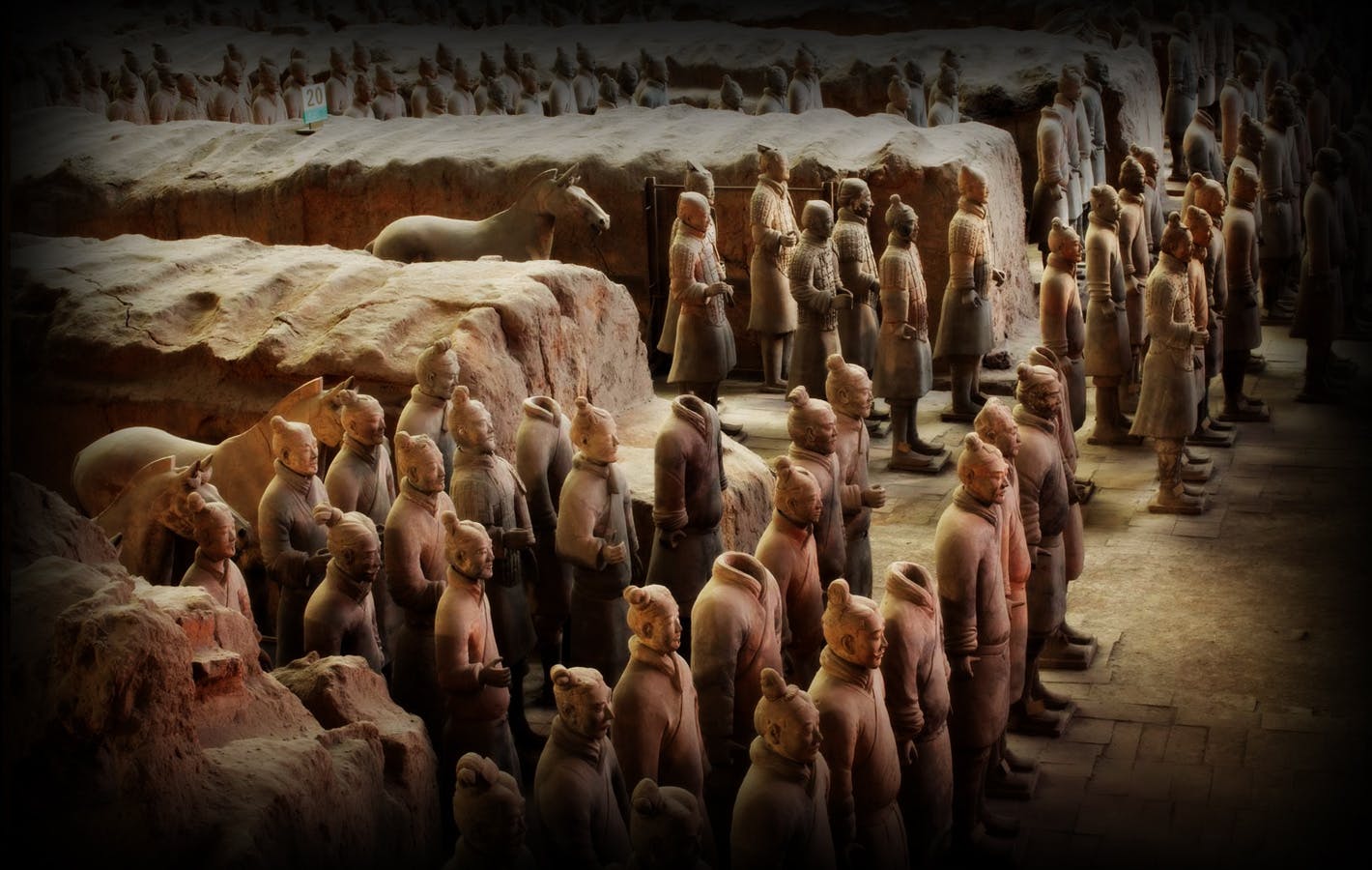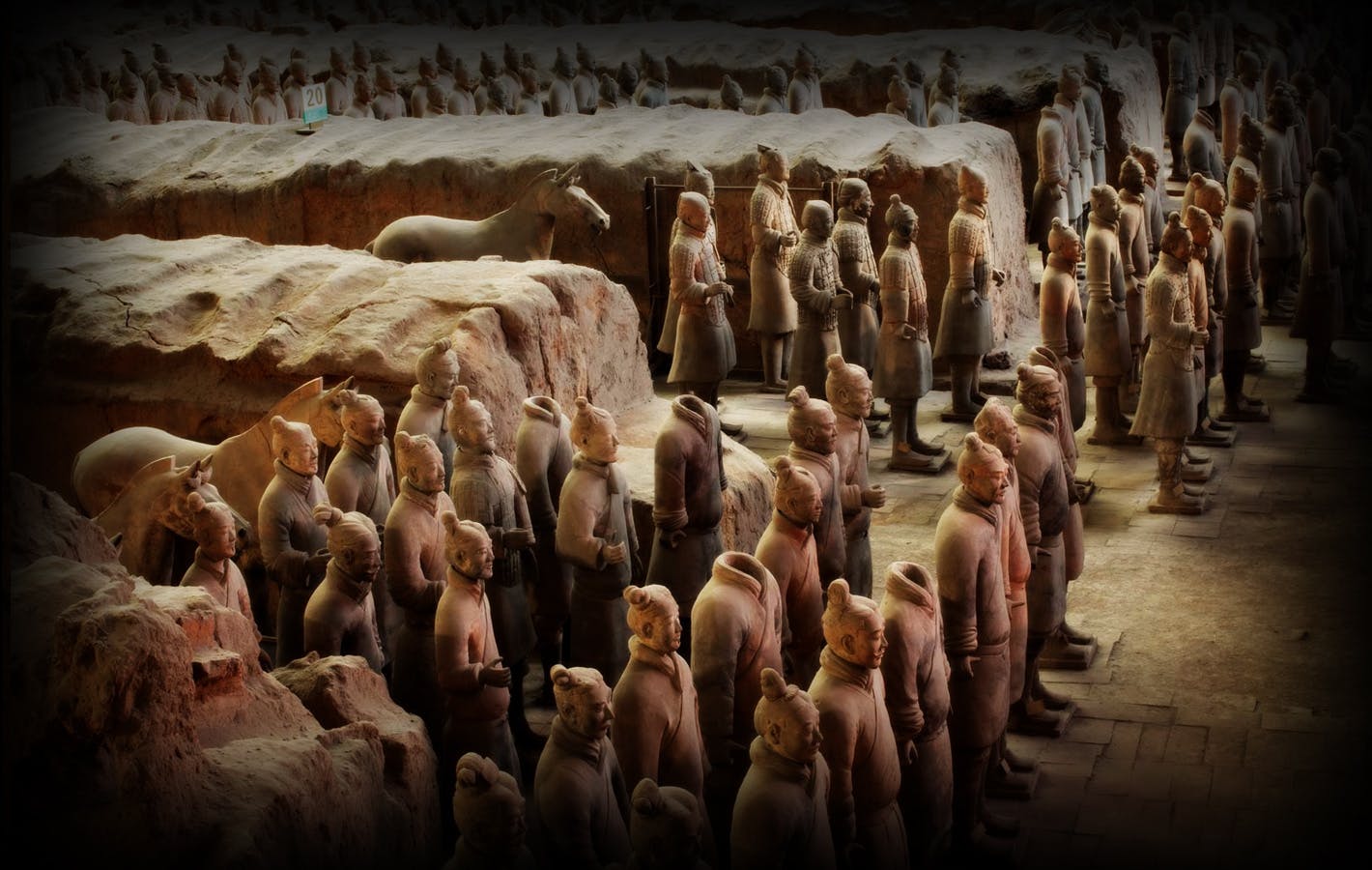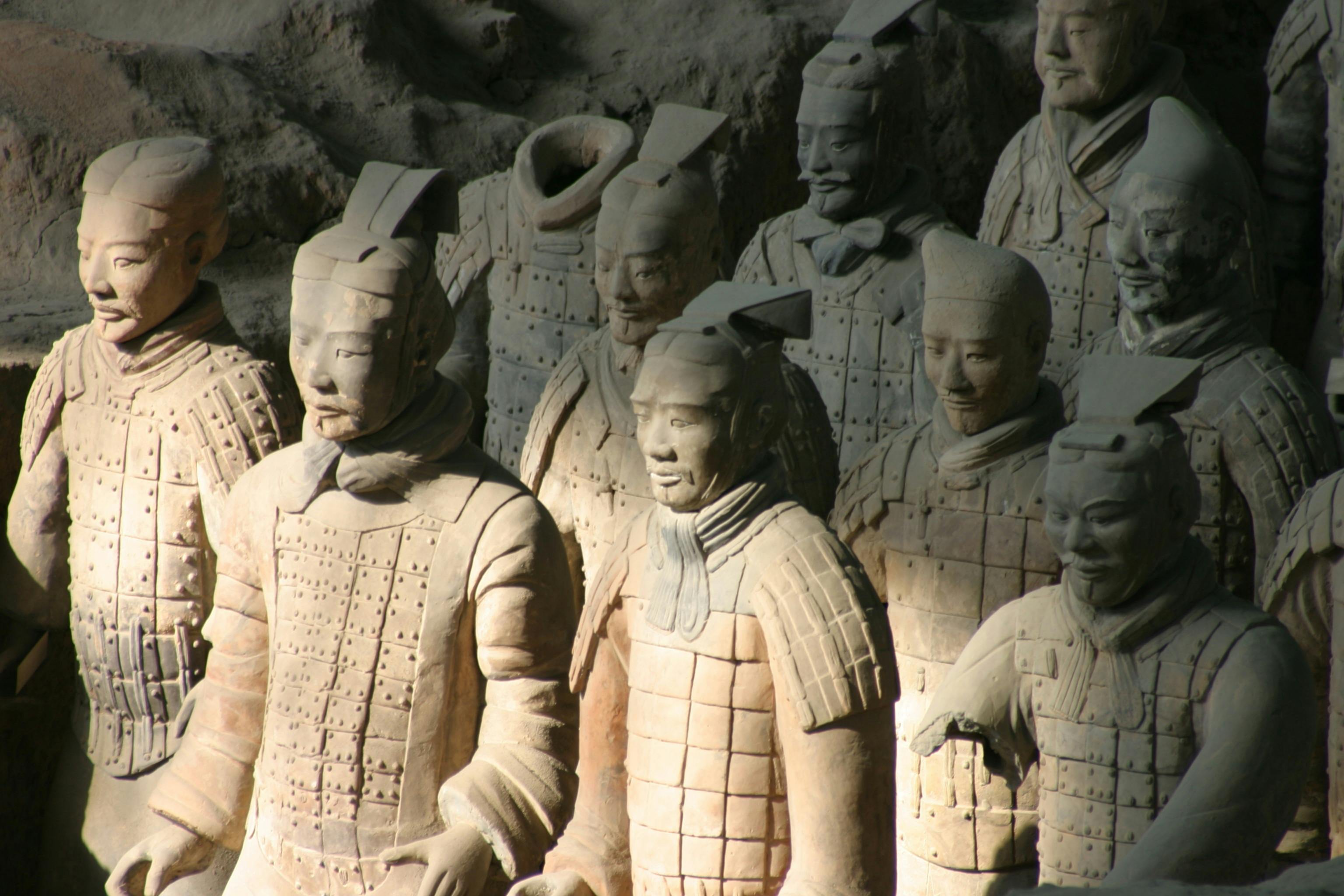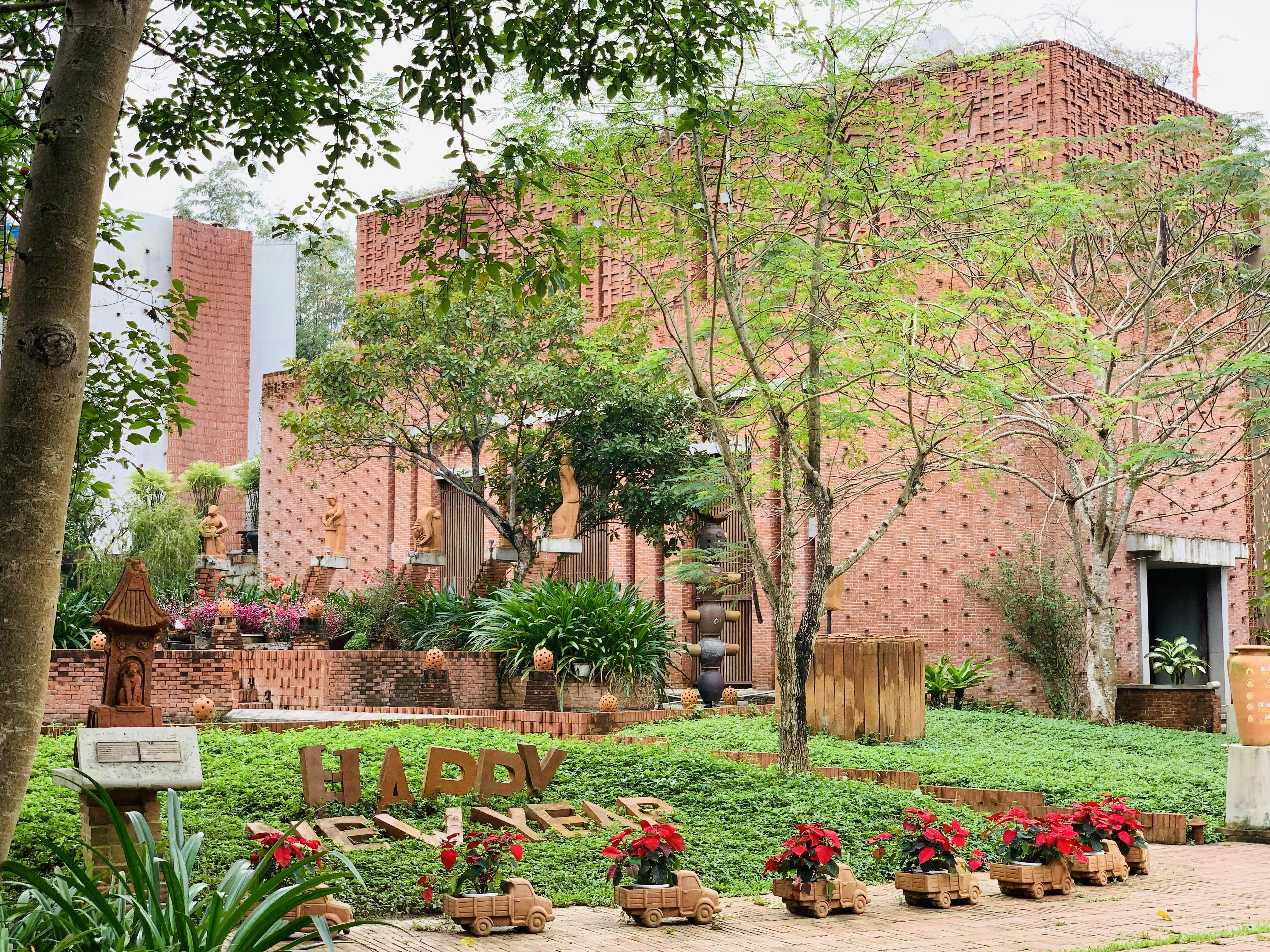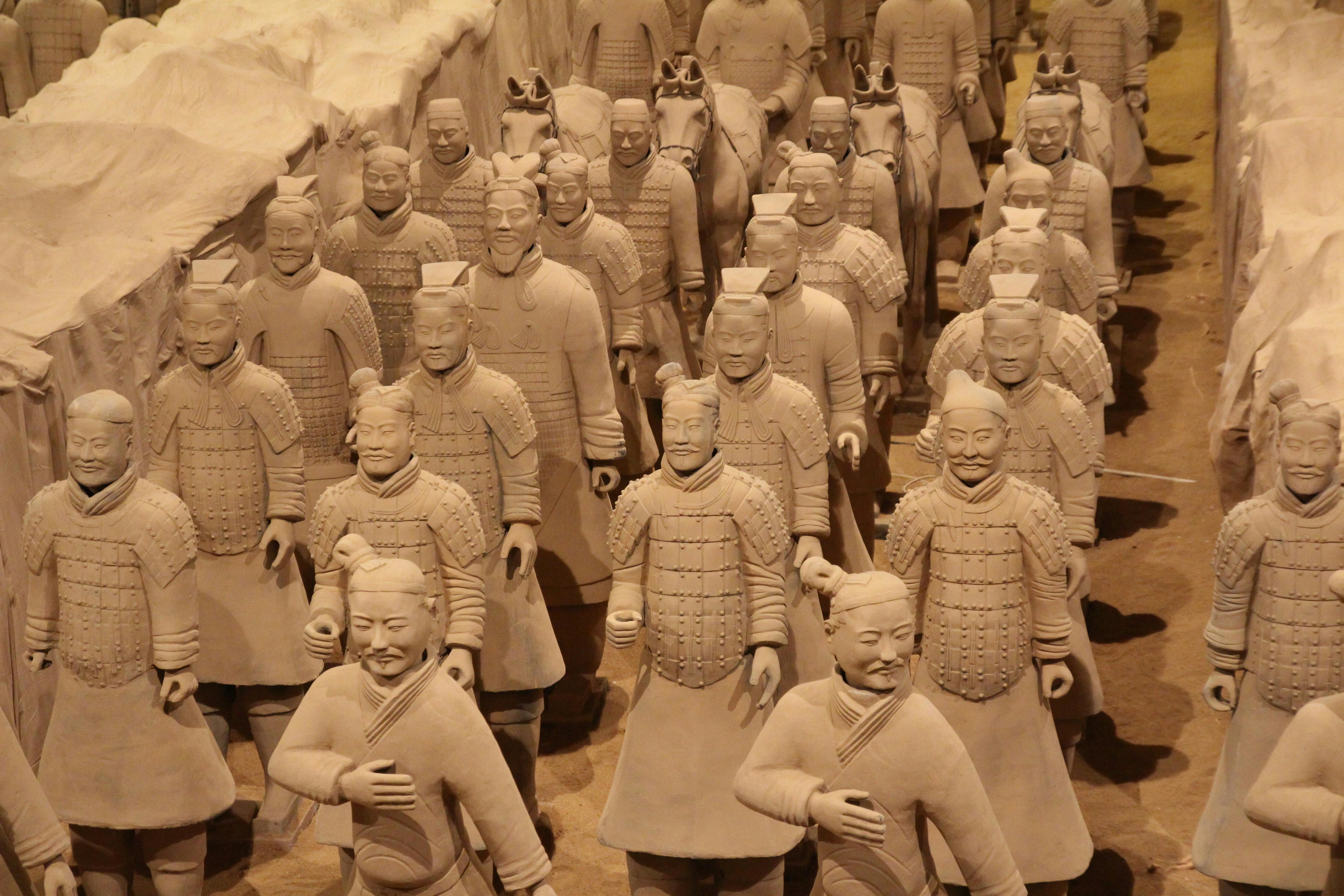The Terracotta Army, discovered in the tomb complex of Emperor Qin Shi Huang, is a remarkable testament to the technological and artistic capabilities of ancient China. The detailed craftsmanship of these life-sized clay warriors offers a unique window into the ingenuity, skill, and resources that defined the Qin Dynasty. By examining the artistry and technology behind these figures, we gain insight into the sophisticated society that produced them and the lengths to which they went to immortalize their emperor’s power.
The Artistry of Individuality
One of the most striking aspects of the Terracotta Warriors is the individuality of each figure. Despite the sheer number of warriors—over 8,000—each one has distinct facial features, expressions, and even hairstyles. This level of detail suggests that the craftsmen of the Qin Dynasty were highly skilled artisans capable of producing unique and lifelike figures on a massive scale.
The creation of the Terracotta Warriors likely involved a combination of mass production techniques and individualized finishing touches. Warriors were assembled from parts created using molds—heads, torsos, arms, and legs were crafted separately and then assembled. After assembly, artisans added unique details by hand, such as facial features, clothing folds, and armor patterns, ensuring that no two warriors were exactly alike. This process demonstrates not only artistic talent but also an understanding of efficiency in large-scale production.
Technological Innovations
The construction of the Terracotta Warriors also reveals significant technological advancements in ancient China. The use of molds for mass production was a revolutionary technique, allowing for the creation of thousands of warriors in a relatively short period. This method, combined with hand-finishing, balanced efficiency with artistic expression.
The warriors were crafted from local clay, with different parts fired separately in kilns before assembly. The firing process itself was complex, requiring precise temperature control to ensure the durability and strength of the figures. The fact that so many of the warriors have survived for over 2,000 years, despite being buried underground, speaks to the advanced knowledge of materials and firing techniques possessed by the Qin craftsmen.
Additionally, the warriors were originally painted in vibrant colors, though much of the paint has faded over time. The use of natural pigments and techniques to create detailed and realistic depictions of armor, weapons, and clothing further highlights the technological prowess of the Qin artisans. The application of these pigments involved not just artistic skill but also a deep understanding of chemistry and materials.
The Organization and Workforce
The creation of the Terracotta Army was a monumental undertaking that required a well-organized and highly skilled workforce. The scale of the project indicates that it was carefully planned and executed, with different teams likely responsible for various aspects of production, from molding and assembly to painting and finishing.
Historical records suggest that the workforce may have included thousands of artisans, laborers, and specialists, all working under the direction of master craftsmen. The division of labor and the coordination required to produce such a vast and detailed army reflects the organizational capabilities of the Qin Dynasty, as well as the importance placed on craftsmanship and artistry in ancient China.
Cultural Significance
The detailed craftsmanship of the Terracotta Warriors also provides insights into the cultural values of the time. The emphasis on realism and individuality in the warriors reflects a society that valued both military power and artistic expression. The meticulous care taken in crafting each warrior suggests a deep respect for the emperor and a belief in the importance of ensuring his protection and legacy in the afterlife.
Moreover, the Terracotta Warriors reveal the influence of various cultural and regional traditions within the Qin Empire. The diversity of the warriors’ appearances, including different ethnic features and military attire, indicates that the Qin Dynasty was a melting pot of cultures, and the artisans drew on a wide range of influences to create these figures.
Conclusion
The craftsmanship behind the Terracotta Army is a testament to the technological and artistic capabilities of ancient China. The combination of mass production techniques with individualized artistry, the advanced knowledge of materials and firing processes, and the well-organized workforce all contribute to the enduring legacy of the Terracotta Warriors. Through their detailed craftsmanship, these figures continue to offer valuable insights into the sophisticated and culturally rich society of the Qin Dynasty.

